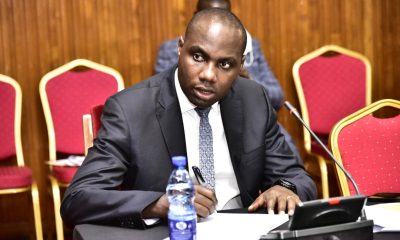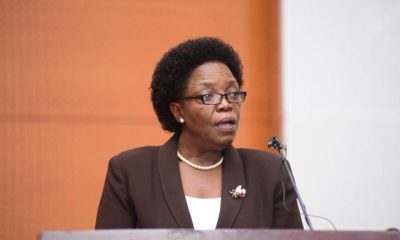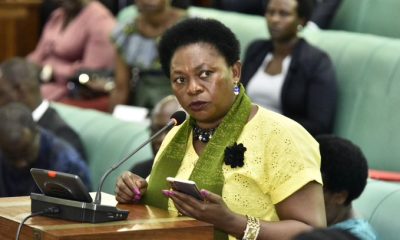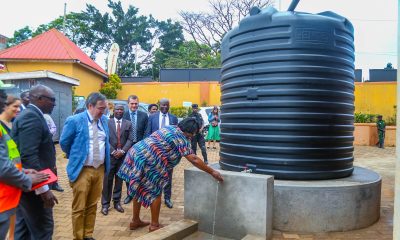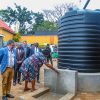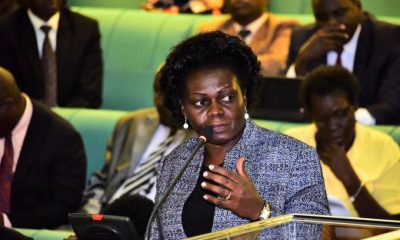Uganda is grappling with a daunting climate finance challenge, with the country requiring between $3-4 billion over the next decade to address its climate adjustment needs. However, the flow of funds into this critical sector is falling short of expectations.
A recent report from the African Development Bank (AfDB) highlights the alarming gap between Uganda’s climate financing needs and the actual funds available. The report reveals that only $785 million, or a mere 25% of the required amount, has been mobilized thus far.
Peter Engbo Rasmussen, the Principal Country Economist at AfDB’s Uganda office, emphasized the stark disparity between the financial resources needed for climate adaptation and mitigation and what Uganda has actually received. He conveyed these concerns during the launch of the Country Focus Report 2023, which centered on “Mobilizing Private Sector Financing for Climate and Green Growth.”
The report underscores the dishearteningly low private sector involvement in climate financing. Out of the $785 million provided between 2019 and 2020, the private sector contributed a paltry $26 million, representing just 3.4% of the total. Sectors fortunate enough to receive climate financing include agriculture, forestry, cross-sectoral initiatives, and energy systems.
One of the key findings of the report is that a significant portion of Uganda’s climate finance comes from international partners in the form of publicly available funds. Rasmussen noted the urgent need to bridge this climate financing gap and encourage greater private sector participation.
To address this challenge, the report suggests that Uganda must create an attractive environment for investors by identifying appealing climate projects. Additionally, the country can tap into its abundant natural capital, both renewable and non-renewable, to finance climate change impacts and transition towards green growth.
The report highlights the grim reality that Uganda is already experiencing the adverse effects of climate change. Temperature increases of 1.3 degrees since the 1960s and forecasts indicating a further rise of 1.5-2.0 degrees in the next 50 years paint a worrisome picture. These changes are expected to bring about warmer weather, extreme weather events, volatile rainfall, flooding, landslides, and prolonged droughts.
Furthermore, Uganda’s rapidly growing population is poised to exacerbate the environmental and economic impacts of climate change.
Experts suggest that Uganda can leverage its abundant natural resources, particularly its oil and gas reserves in the Albertine region, to finance climate change initiatives. With an estimated 1.4 billion barrels of commercially viable oil reserves and production slated to begin in 2025, the government must carefully consider how to utilize the additional revenue to bolster sustainable sectors of the economy.
Beyond oil and gas, the report highlights Uganda’s potential to become a regional producer and exporter of green iron and steel. However, this endeavor necessitates collaboration with partner firms due to the lengthy development timelines for mineral projects. The report recommends engaging with global developers of green hydrogen, a crucial component in green iron and steel production.
In response to these challenges, Denis Mugaga, Head of the Climate Finance Unit at the Ministry of Finance, acknowledges the declining trend in global climate finance, including grants and concessional funds. Uganda faces difficulties in raising the necessary financing to support its climate ambitions, as outlined in its Nationally Determined Contribution (NDC) under Article 4 of the Paris Agreement.
Uganda had set a target of raising $21.8 billion for adaptation and mitigation actions, with 15% to come from national resources and 40% from the private sector. However, Mugaga revealed that the government’s investment for the current fiscal year stands at about 7 trillion shillings, falling short of the annual target of 14 million shillings required to meet the NDC objectives.
To bridge this gap, Mugaga stressed the need to increase domestic resources and enhance access to financing from international bodies such as the UNFCCC’s Global Environment Facility, the Green Climate Fund, adaptation funds, and multilateral agencies like the World Bank.
The Ministry of Finance is actively working on climate budget funding within the program-based budgeting framework, quantifying adaptation and mitigation actions across various programs under the National Development Plan III.
Finally, the report underlines the severe consequences of inaction on climate change, emphasizing that the long-term costs of not adapting infrastructure and the economy to climate pressures will far exceed the investment required. The Ministry of Water and Environment estimates that by 2025, annual inaction costs could range from $3.1-5.9 billion, escalating to $18-27 billion by 2050, driven primarily by unmet irrigation and biomass demand.


